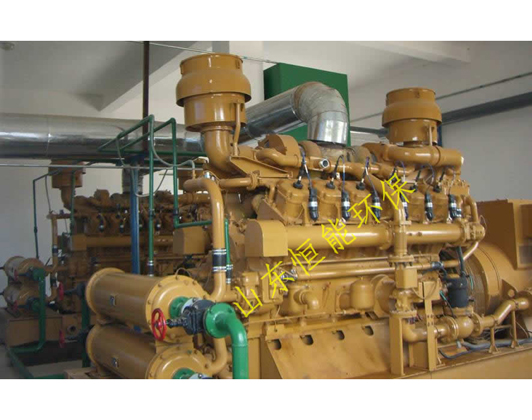沼氣提純有四種方法可以實現,分別是吸收法、變壓吸附法、低溫冷凝法和膜分離方法。
There are four methods for biogas purification, namely absorption method, pressure swing adsorption method, low-temperature condensation method and membrane separation method.
吸收提純法是利用有機胺溶液(一級胺、二級胺、三級胺、空間位阻胺等)與二氧化碳的物理化學吸收特性來實現的,即在吸收塔內的加壓、常溫條件下與沼氣中的二氧化碳發生吸收反應進行脫碳提純甲烷,吸收富液在再生塔內的減壓、加熱條件下發生逆向解析反應,釋放出高純度的二氧化碳氣體,同時富液得到再生具備重新吸收二氧化碳的能力,從而實現沼氣在吸收塔內的連續脫碳提純甲烷過程,并使得脫碳液進行連續的吸收、再生循環工作。
The absorption and purification method is realized by using the physicochemical absorption characteristics of organic amine solution (primary amine, secondary amine, tertiary amine, steric amine, etc.) and carbon dioxide, that is, it reacts with carbon dioxide in biogas under pressure and normal temperature in the absorption tower to decarbonize and purify methane, and absorb the decompression and purification of rich liquid in the regeneration tower The reverse analytical reaction occurs under heating conditions to release high-purity carbon dioxide gas. At the same time, the rich liquid is regenerated and has the ability to re absorb carbon dioxide, so as to realize the continuous decarburization and purification of methane in the absorption tower, and make the decarburized liquid carry out continuous absorption and regeneration cycle.

變壓吸附提純法是利用吸附劑(如分子篩等)對二氧化碳的選擇性吸附特點, 即在吸附劑上二氧化碳相對其他氣態組分有較高的分離系數, 來達到對沼氣中二氧化碳進行脫除的目的。
PSA purification method uses the selective adsorption characteristics of adsorbents (such as molecular sieves) for carbon dioxide, that is, carbon dioxide has a higher separation coefficient than other gaseous components on the adsorbent to achieve the purpose of removing carbon dioxide from biogas.
在吸附過程中,原料氣在加壓條件下其中的二氧化碳被吸附在吸附塔內,甲烷等其他弱吸附性氣體作為凈化氣排出,當吸附飽和后將吸附柱減壓甚至抽成真空使被吸附的二氧化碳釋放出來。為了保證對氣體的連續處理要求,變壓吸附法至少需要兩個吸附塔, 也可是三塔、四塔或更多。
During the adsorption process, the carbon dioxide in the feed gas is adsorbed in the adsorption tower under pressurized conditions, and other weakly adsorbed gases such as methane are discharged as purified gas. When the adsorption is saturated, the adsorption column is depressurized or even vacuumized to release the adsorbed carbon dioxide. In order to ensure the continuous treatment of gas, PSA requires at least two adsorption towers, or three towers, four towers or more.
